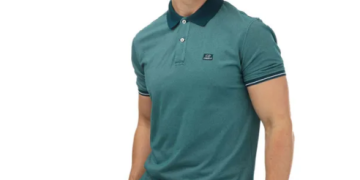In today’s world, where environmental consciousness is on the rise, the fashion industry is undergoing a significant shift towards sustainability. As consumers become more aware of the environmental and social impact of fast fashion, there is a growing demand for alternative approaches to dressing stylishly without compromising the planet’s health. One such approach gaining momentum is DIY fashion hacks, where individuals repurpose and reimagine old garments to create unique and sustainable styles.
Understanding Repurposing and Reimagining
Repurposing and reimagining involve breathing new life into old clothing items by transforming them into something fresh and fashionable. It’s about seeing the potential in overlooked pieces and unleashing creativity to turn them into something remarkable. Whether it’s upcycling old jeans into trendy denim shorts or adding embellishments to a plain shirt, the possibilities are endless.
Benefits of DIY Fashion Hacks
The benefits of DIY fashion hacks extend beyond personal style. By repurposing and reimagining old clothes, individuals contribute to reducing textile waste and minimizing their carbon footprint. Additionally, DIY projects are often more cost-effective than buying new clothes, saving money in the long run. Moreover, DIY fashion allows individuals to express their unique style and creativity, fostering a deeper connection to their wardrobe.
Basic Tools and Materials
Embarking on a DIY fashion journey requires some basic tools and materials. Sewing needles, thread, scissors, and a sewing machine are essential for most projects. Additionally, materials like fabric scraps, buttons, ribbons, and patches can be sourced from old garments or craft stores.
Repurposing Techniques
Upcycling is a popular repurposing technique that involves transforming old garments into new ones with added value. For example, turning a pair of worn-out jeans into a stylish denim skirt or repurposing an old sweater into a cozy beanie. Other techniques include transforming accessories like scarves or belts and adding patchwork or embellishments to revitalize plain clothing items.
Reimagining Strategies
Reimagining fashion involves thinking outside the box and experimenting with unconventional combinations. Mixing and matching different clothing items, layering textures and patterns, and incorporating unexpected elements like jewelry or scarves can breathe new life into a tired wardrobe.
DIY Fashion Hacks for Different Seasons
DIY fashion hacks can be tailored to suit different seasons and occasions. In the summer, repurpose old t-shirts into tank tops or create stylish beach cover-ups from oversized shirts. In the winter, transform old sweaters into mittens or repurpose scarves into infinity scarves or headbands.
Tips for Successful DIY Projects
To ensure successful DIY projects, it’s essential to plan carefully and pay attention to detail. Sketching designs beforehand can help visualize the final product, while proper cutting and sewing techniques ensure a polished finish. Additionally, adding personal touches like embroidery or custom tags can elevate the uniqueness of each piece.
Inspiration from Sustainable Fashion Icons
Drawing inspiration from sustainable fashion icons can provide valuable insights into innovative repurposing and reimagining techniques. Whether it’s a renowned designer or a grassroots movement, studying their approach to sustainability can spark creativity and motivate individuals to make a positive impact through fashion.
Social Impact of DIY Fashion
Beyond personal satisfaction, DIY fashion has a broader social impact by fostering community involvement and resource sharing. Hosting DIY workshops or participating in clothing swaps promotes collaboration and empowers individuals to take control of their style in a sustainable way.
Challenges and Solutions
While DIY fashion offers numerous benefits, it’s not without its challenges. Limited access to materials or lack of sewing skills can be barriers for some individuals. However, with determination and resourcefulness, these challenges can be overcome through online tutorials, community support, and creative problem-solving.
Case Studies of Successful DIY Projects
Real-life examples of successful DIY projects showcase the transformative power of repurposing and reimagining. From individuals upcycling thrifted finds to fashion brands incorporating recycled materials into their collections, these case studies highlight the versatility and impact of sustainable fashion.
Future Trends in Sustainable Fashion
As technology continues to evolve, so do the possibilities for sustainable fashion. Advancements in 3D printing, fabric recycling, and wearable technology offer exciting opportunities for innovation in DIY fashion. With increasing awareness and demand for sustainable alternatives, the future of fashion looks brighter than ever.
The Role of Education and Awareness
Education plays a crucial role in promoting the adoption of sustainable fashion practices. By raising awareness about the environmental and social impact of clothing production and consumption, individuals can make informed choices and advocate for change. Workshops, tutorials, and educational resources empower people to embrace DIY fashion as a means of creating a more sustainable wardrobe.
Conclusion
In conclusion, DIY fashion hacks offer a creative and sustainable solution to the environmental challenges posed by fast fashion. By repurposing and reimagining old garments, individuals can reduce waste, save money, and express their unique style. With the right tools, materials, and inspiration, anyone can embark on a DIY fashion journey and contribute to a more sustainable future.

FAQs:
- Are DIY fashion hacks suitable for beginners?
Yes, many DIY projects are beginner-friendly and require minimal sewing skills. Start with simple projects and gradually build confidence and expertise.
- How can I find inspiration for DIY fashion projects?
Look for inspiration in fashion magazines, online tutorials, and social media platforms like Pinterest or Instagram. Additionally, nature, art, and everyday objects can spark creative ideas.
- What are some eco-friendly materials for DIY fashion?
Eco-friendly materials include organic cotton, bamboo fabric, recycled polyester, and Tencel. Look for sustainable alternatives to conventional fabrics when sourcing materials for your projects.
- Can DIY fashion hacks save money?
Yes, DIY fashion hacks are often more cost-effective than buying new clothes. By repurposing and reimagining old garments, you can save money on clothing purchases while reducing waste.
- How can I share my DIY fashion creations with others?
Share your DIY fashion projects on social media platforms, participate in clothing swaps or local markets, and consider starting a blog or YouTube channel to inspire others with your creativity and sustainability efforts.




